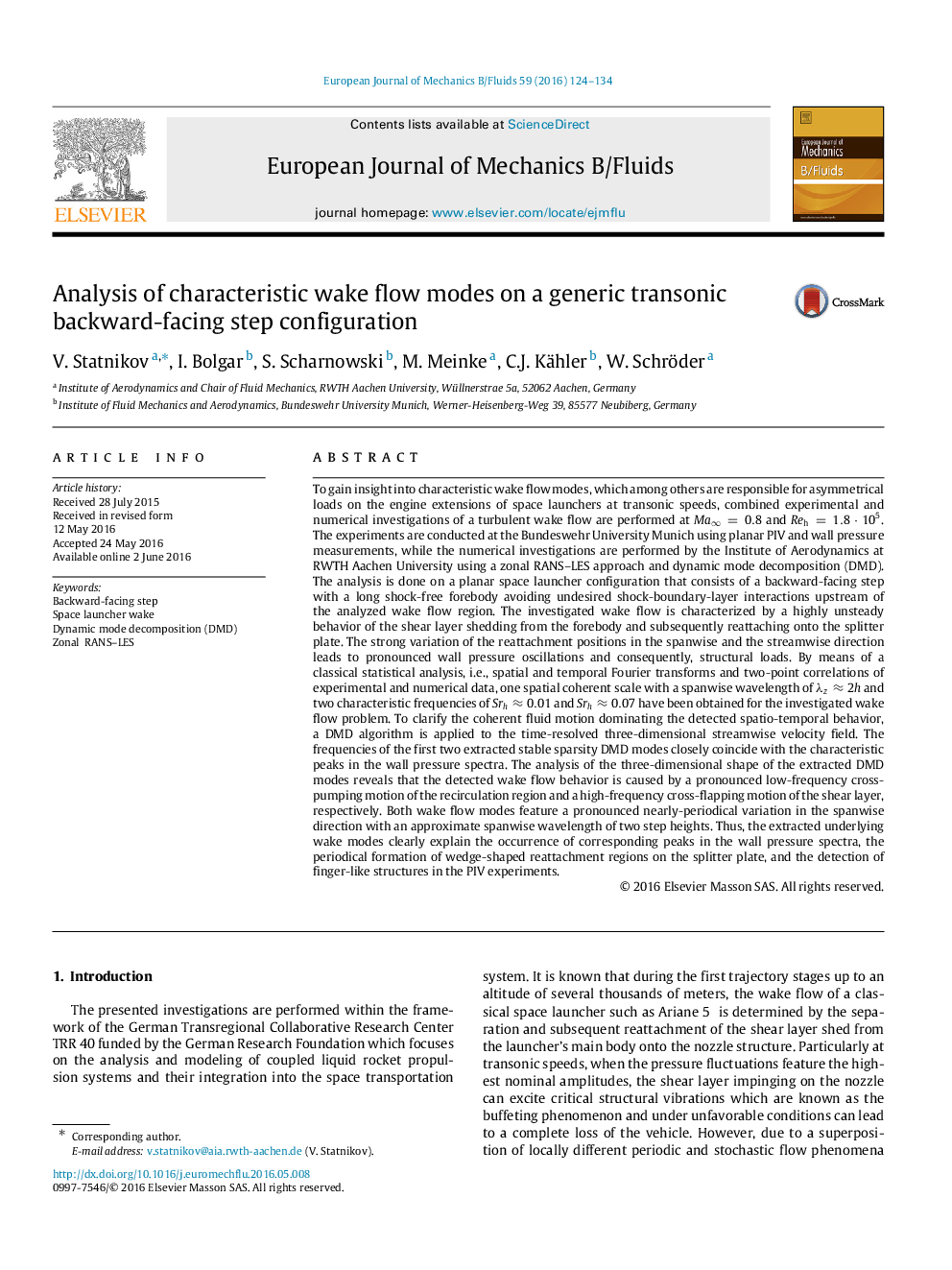| کد مقاله | کد نشریه | سال انتشار | مقاله انگلیسی | نسخه تمام متن |
|---|---|---|---|---|
| 650194 | 1457265 | 2016 | 11 صفحه PDF | دانلود رایگان |
To gain insight into characteristic wake flow modes, which among others are responsible for asymmetrical loads on the engine extensions of space launchers at transonic speeds, combined experimental and numerical investigations of a turbulent wake flow are performed at Ma∞=0.8Ma∞=0.8 and Reh=1.8⋅105. The experiments are conducted at the Bundeswehr University Munich using planar PIV and wall pressure measurements, while the numerical investigations are performed by the Institute of Aerodynamics at RWTH Aachen University using a zonal RANS–LES approach and dynamic mode decomposition (DMD). The analysis is done on a planar space launcher configuration that consists of a backward-facing step with a long shock-free forebody avoiding undesired shock-boundary-layer interactions upstream of the analyzed wake flow region. The investigated wake flow is characterized by a highly unsteady behavior of the shear layer shedding from the forebody and subsequently reattaching onto the splitter plate. The strong variation of the reattachment positions in the spanwise and the streamwise direction leads to pronounced wall pressure oscillations and consequently, structural loads. By means of a classical statistical analysis, i.e., spatial and temporal Fourier transforms and two-point correlations of experimental and numerical data, one spatial coherent scale with a spanwise wavelength of λz≈2hλz≈2h and two characteristic frequencies of Srh≈0.01Srh≈0.01 and Srh≈0.07Srh≈0.07 have been obtained for the investigated wake flow problem. To clarify the coherent fluid motion dominating the detected spatio-temporal behavior, a DMD algorithm is applied to the time-resolved three-dimensional streamwise velocity field. The frequencies of the first two extracted stable sparsity DMD modes closely coincide with the characteristic peaks in the wall pressure spectra. The analysis of the three-dimensional shape of the extracted DMD modes reveals that the detected wake flow behavior is caused by a pronounced low-frequency cross-pumping motion of the recirculation region and a high-frequency cross-flapping motion of the shear layer, respectively. Both wake flow modes feature a pronounced nearly-periodical variation in the spanwise direction with an approximate spanwise wavelength of two step heights. Thus, the extracted underlying wake modes clearly explain the occurrence of corresponding peaks in the wall pressure spectra, the periodical formation of wedge-shaped reattachment regions on the splitter plate, and the detection of finger-like structures in the PIV experiments.
Journal: European Journal of Mechanics - B/Fluids - Volume 59, September–October 2016, Pages 124–134
